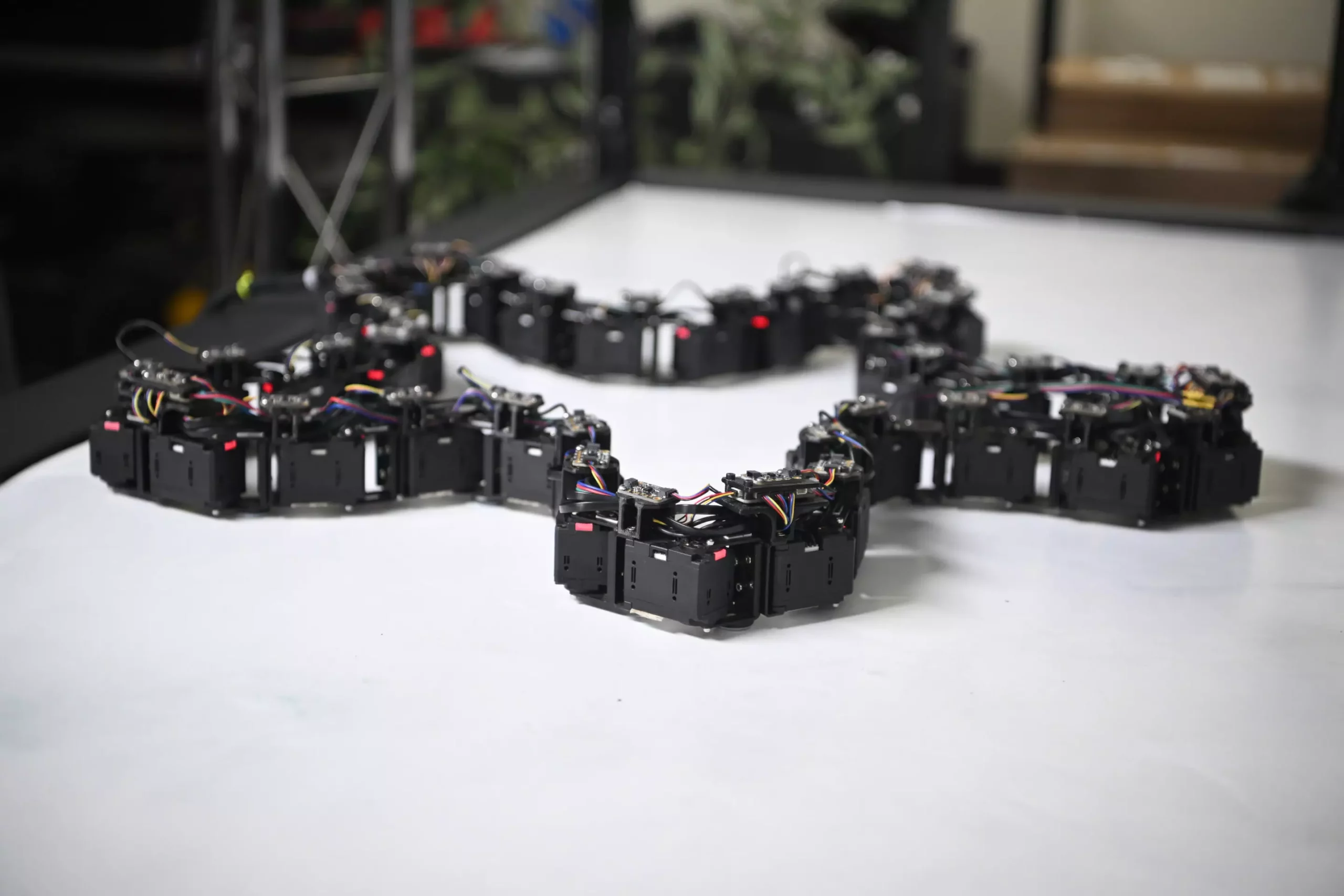The field of robotics has seen remarkable advancements over the years, yet the journey towards true autonomy remains a work in progress. At West Virginia University (WVU), a team of roboticists led by Professor Yu Gu is embarking on an innovative trajectory to redefine our understanding of robotic behavior and self-organization through a revolutionary design known as “Loopy.” This multicellular robot challenges traditional paradigms by allowing its individual cells to collaborate organically, paving the way for new applications in various domains.
Loopy is not just an ordinary robot; it represents a complex system composed of 36 interlinked robotic cells arranged in a circular formation. Each cell plays an active role in controlling its movements and possesses sensors that monitor both its internal state and environmental changes. This unique structure empowers Loopy to adapt and effectively respond to different situations without direct programming. Its design draws influence from natural systems, mirroring phenomena like ant swarms and plant growth, which thrive on decentralized responses to stimuli.
The essence of Loopy lies in its ability to “co-design” itself, engaging in the dynamic reshaping of its physical form in response to external conditions. This feature illustrates a shift from traditional top-down robotics, where human engineers dictate every behavior, to a bottom-up approach where robots engage with their environment in a more organic manner. As Gu aptly notes, the conventional method often results in robots that are “unnatural and brittle” in their operations, struggling to adapt to new or unforeseen scenarios.
The research environment established at Gu’s lab includes an array of cutting-edge technologies designed to analyze Loopy’s performance. A tabletop testing area equipped with overhead cameras, motion capture systems, and projectors provides a comprehensive assessment landscape. Employing elements like heated wires will simulate contamination areas, allowing researchers to explore how Loopy navigates and reacts to these simulated threats.
These experiments are particularly vital in evaluating Loopy’s competence in delineating contaminated zones, such as oil spills or toxin leaks, which could have significant implications for environmental monitoring and remediation. The versatility of this robotic platform is put to the test across variable conditions—with challenges such as diverse surface textures and physical obstacles—to measure how well Loopy manages unexpected scenarios.
As they delve into these experiments, Gu and his team will not only focus on the success metrics of Loopy’s autonomous strategies but will also engage in a comparative analysis against conventional, centralized robotic systems. This juxtaposition stands to reveal whether the emergent behaviors exhibited by Loopy provide advantages in adaptability and resilience.
One of the cornerstone inspirations for Loopy comes from studying biological systems, particularly the intelligence found in plant behaviors. Plants adeptly adjust their growth patterns in response to environmental stimuli, relying on decentralized signaling mechanisms. Gu asserts that each cell’s function in coordinating collective behavior mirrors how roots dynamically grow towards water and nutrients.
This biological analogy emphasizes the importance of distributed coordination over centralized control—a theme that resonates throughout the design philosophy of Loopy. By incorporating such mechanisms, the WVU team is transforming the landscape of robotics, suggesting that robots can attain higher levels of autonomy and efficiency by mimicking the adaptive strategies of living organisms.
The implications of Loopy’s research extend far beyond academic curiosity. By fostering an understanding of self-organization in robotics, the WVU team aims to explore practical applications ranging from dynamic leak sealing technologies to interactive art installations. The potential for Loopy to adapt and manipulate its form in real-time offers a glimpse into a future where robots operate with a level of independence similar to natural organisms.
Contrary to traditional approaches that treat robots as isolated entities, the philosophy underpinning Loopy fosters a collaborative interaction between the robot, human designers, and the environment, echoing principles akin to permaculture. As this paradigm of robotics continues to develop, the possibility of integrating swarm behaviors into various industries becomes increasingly plausible.
The work being undertaken by WVU’s roboticists signifies a groundbreaking shift towards more adaptive, resilient robotic systems. The vision of Loopy does not merely expand the boundaries of robotics research; it fundamentally alters the conversation surrounding autonomy and design, urging us to rethink what it means for machines to learn, adapt, and collaborate in a dynamic world.

